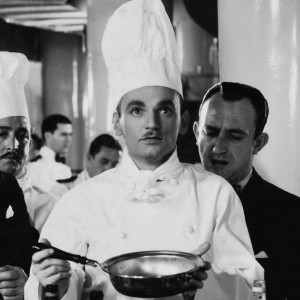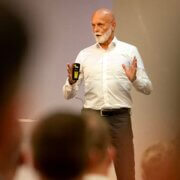Cooks Who Can See Their Customers, Have Higher Customer Satisfaction
 In the latest edition of Harvard Business Review, I read an article about an experiment where cooks and customers in a restaurant could or could not see each other. The results were remarkable. They constitute a valuable addition to earlier research by Ryan W. Buell and Michael Norton which showed that websites that show what happens behind the scenes of a company, ensure higher customer satisfaction.
In the latest edition of Harvard Business Review, I read an article about an experiment where cooks and customers in a restaurant could or could not see each other. The results were remarkable. They constitute a valuable addition to earlier research by Ryan W. Buell and Michael Norton which showed that websites that show what happens behind the scenes of a company, ensure higher customer satisfaction.
Experiment
Ryan W. Buell, an assistant professor at Harvard Business School, together with a doctoral student at Harvard Business School and an assistant professor at University College London, designed an experiment to be conducted in a restaurant for two weeks. This experiment consisted of four scenarios. In the first scenario, the baseline, the guests, and the cooks do not see each other. In the second, the guests could see the cooks. In the third, the cooks could see the guests. In the fourth, both guests and the chefs could see each other.
Customer Satisfaction
The researchers checked the cooking time and the quality of the meals served. Plus the appreciation of the customer. The results showed that when the chefs were able to see for whom they wearied themselves, their meals were given a higher rating. The satisfaction of customers in regards to the food was 10% higher if the cooks could see the customers, even though that was not the same in reverse. In the opposite case, if the customers could see the cooks and not the other way around, there was no difference in satisfaction relative to the baseline in which neither of them could see each other.
Even more striking was the result when both cooks and guests could see each other. Then, customer satisfaction was a whopping 17.3% higher and the service was 13.2% faster.
Quality
It was not only the perception of the quality of food that went up, the food was objectively better. During the experiment in the kitchen, an observer was present, took notes, and evaluated the service. The observer noted that the cooks would sometimes grill the eggs before they were needed, and would often cook them for longer than was necessary. From the moment that the cooks were able to see the clients, they would prepare the eggs based on the time they were ordered.
Happy Employees
The researchers discovered that the sight of customers made the cooks feel more appreciated, they were happier with their work, and their willingness to work harder. Without exception, the cooks described how nice it was to see the customer. That enhanced the way the cooks felt about their work and enhanced their feeling that their work mattered. For the cooks, it did not matter whether the customers could see them. It was the sight of the customers that motivated them to do a better job.
Transparency
The researchers did this experiment in various parts of the world, in restaurants with different chefs and with diverse customer populations. In all cases, it showed that transparency adds value. Earlier research conducted by W. Ryan Buell and Michael Norton showed that all websites that show what happens behind the scenes of a company, ensure higher customer satisfaction. It’s not just about the final product or outcome, but also what precedes it.
The researchers, therefore, argue for greater transparency between companies and customers. Simply opening up the work environment can increase and improve the quality and value. This makes transparency a low-cost strategic advantage.
Frans Reichardt | The Customer Listener














Leave a Reply
Want to join the discussion?Feel free to contribute!